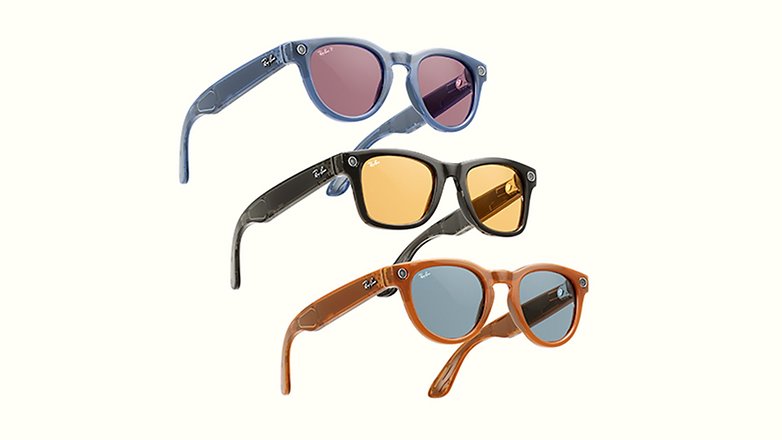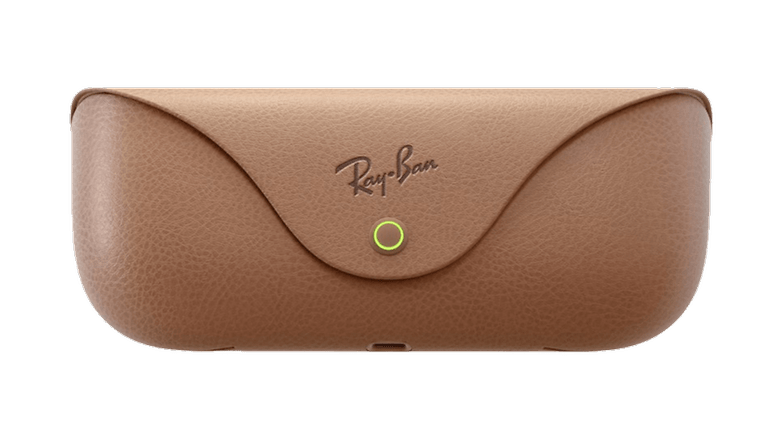
In addition to fully announcing the Quest 3 headset today at Meta’s Connect event, the company also debuted its new smart glasses soberly called the Ray-Ban Meta Smart Glasses. The glasses are an upgrade to the original Ray-Ban Stories and will be available for pre-orders at $299 starting today before it hit shelves on October 17.
Although Meta’s new Ray-Ban glasses lack any numerical indication on its name to clearly distinguish them from the first Ray-Ban Stories, the pair of smart spectacles ship with notable improvements in many departments.
Ray-Ban Meta Smart Glasses have better cameras and longer video recording capability
Primarily, the Ray-Ban Meta Smart Glasses have better and sharper front-facing cameras. The sensors can now take 12 MP photos and videos in 1080p resolution at 60 fps and up to 60 seconds duration. These are then stored into the 32 GB on-board memory.
If you want longer videos, Meta is adding the ability to directly livestream your recording to Facebook and Instagram handsfree right from the glasses. However, Meta says that the View app for mobile doesn’t allow you to pick the quality footage as this depends on your internet connection, at least for now.
As for privacy concerns, the LED indicator on the next-gen glasses are larger compared to its predecessor. This helps people around you to easily recognize if you’re recording videos or taking photos.

Ray-Ban Meta Smart Glasses feature spatial audio for recording and playback
When it comes to audio, the company touts that the built-in speakers on the new spectacles are 50 percent louder compared to Meta’s old Ray-Ban Stories. At the same time, Meta enhanced the audio system to concentrate the output on your ears only and avoid the sound to leak and hear by the people in your surrounding.
Meta also gave the new Ray-Ban smart glasses upgraded microphones. There are a total of five mics located around the wearable and these can produce spatial audio and deliver clearer voice calling and commands via Meta AI. Surprisingly, the speakers will also be compatible to play spatial audio recordings made by the glasses’ mics. It’s unclear whether tracks from third-party streaming apps will be supported though.

The next-gen Ray-Ban Meta glasses are powered by Qualcomm’s Snapdragon AR1 Gen 1 chipset and come with an up to 6-hour battery in mixed usage including livestreaming. Charging the device is done through the classic-looking Ray-Ban case that comes with an LED indicator and USB-C connector. This enclosure can refill the glasses for up to eight times or a total of 36 hours of battery life.
Meta’s Ray-Ban smart glasses and Quest 3 release dates
Similar to standard sunglasses, Ray-Ban is offering Meta’s next-gen smart glasses at $299 in different styling such as the classic headliner or wayfarer. There will be polarized lenses too at $329 while those with transition lenses will cost $379. The glasses themselves are IPX4 water-resistant too and lighter than before.
The Ray-Ban Meta Smart Glasses will also be available in select countries including Australia, Canada, and Europe on October 17, but it’s unclear how much they are going to cost in these markets.
At the same event, Meta has also announced that the Meta Quest 3 mixed reality headset is available for pre-orders while it should be available on sale in stores on October 10.






